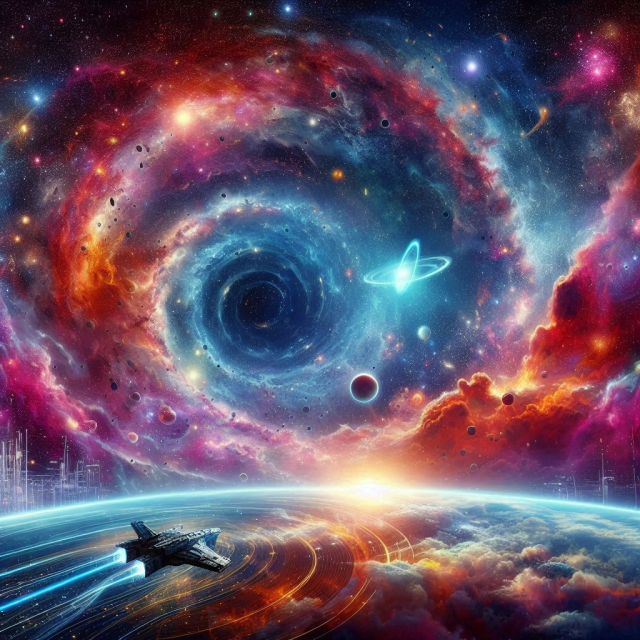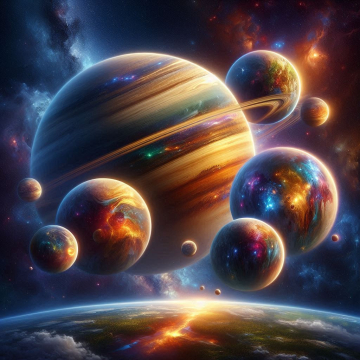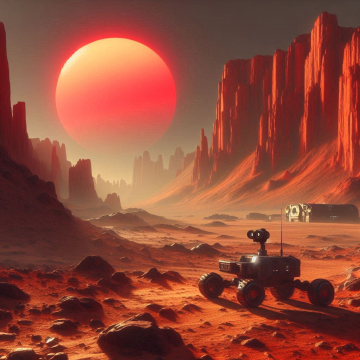The universe is vast, complex and full of mysteries that we are still beginning to understand. From the immensity of galaxies to the smallest particles, the cosmos offers countless curious facts that challenge our understanding and awaken our imagination. In this article, we'll explore 20 fascinating facts about the universe, ranging from its origin and structure to the wonders and enigmas it holds.
The Big Bang: The Beginning of Everything.
The universe began approximately 13.8 billion years ago with an explosion called the Big Bang. This event marked the beginning of time and space as we know it, creating all the matter and energy that exists in the universe.
The Expansion of the Universe.
The universe is constantly expanding. Galaxies are moving away from each other, and this expansion is accelerating due to a mysterious force known as dark energy. This phenomenon was discovered in 1998 by astronomers Saul Perlmutter, Brian Schmidt and Adam Riess.
Dark Matter.
Approximately 27% of the universe is made up of dark matter, a form of matter that neither emits nor absorbs light, so it cannot be directly observed. Its existence is inferred from the gravitational effects it exerts on visible matter, such as galaxies.
The Dark Energy.
Dark energy makes up about 68% of the universe. It is a repulsive force that is causing the expansion of the universe to accelerate. Although its exact nature is unknown, it is believed that it could be related to the cosmological constant proposed by Albert Einstein.
The Observable Universe.
The observable universe has a diameter of about 93 billion light years. However, the entire universe could be much larger, and even infinite. The limit of the observable universe is determined by the distance that light has been able to travel from the Big Bang until now.
The Cosmic Microwave Background.
The cosmic microwave background (CMB) is residual radiation from the Big Bang. It is a faint microwave glow that fills the universe and provides a "picture" of the cosmos when it was just 380,000 years old. The CMB is one of the most important tests of the Big Bang model.
Neutron Stars.
Neutron stars are the extremely dense remains of supernovae, which are explosions of massive stars. A neutron star can have a mass greater than that of the Sun, but with a diameter of only about 20 kilometers. They are so dense that a teaspoon of their material would weigh about a billion tons.
The Black Holes.
Black holes are regions of space where gravity is so strong that nothing, not even light, can escape them. They form when massive stars collapse at the end of their lives. Supermassive black holes, found at the centers of many galaxies, can have masses equivalent to millions or billions of times the mass of the Sun.
The Olbers Paradox.
Olbers' paradox asks why the night sky is dark if the universe is infinite and static, full of stars. The answer lies in the fact that the universe is neither infinite nor static, but rather has a beginning and is expanding, which limits the amount of starlight that reaches us.
The Pulsars.
Pulsars are a type of neutron star that emit beams of electromagnetic radiation from their magnetic poles. As the star rotates, these beams can be detected from Earth as regular pulses of radio, visible light, X-rays or gamma rays. Pulsars can spin at extremely high speeds, up to hundreds of times per second.
The Andromeda Galaxy.
The Andromeda galaxy is the closest galaxy to the Milky Way and is about 2.5 million light years away. It is moving towards our galaxy and is expected to collide in about 4 billion years, merging to form a new galaxy.
The speed of light.
The speed of light in a vacuum is approximately 299,792 kilometers per second. Nothing in the universe can travel faster than light, setting a fundamental limit for the transmission of information and the observation of cosmic events.
Einstein's General Relativity.
Albert Einstein's theory of general relativity, published in 1915, revolutionized our understanding of gravity. According to this theory, gravity is not a force in the traditional sense, but a curvature of space-time caused by mass and energy.
The Quasars.
Quasars are the most luminous and energetic objects in the universe. They are active galactic nuclei fed by supermassive black holes that are accumulating matter. Quasars can emit more energy than hundreds of galaxies combined.
The Multiverse.
Some cosmological theories suggest the existence of a multiverse, a set of multiple and diverse universes. Each of these universes could have its own physical laws and constants. Although this idea is speculative, it provides a way to explain certain cosmological observations and paradoxes.
The Ordinary Matter.
Only 5% of the universe is made up of ordinary matter, also known as baryonic matter. This matter includes everything we know and can directly observe: stars, planets, interstellar gas, and ourselves.
The Fermi Paradox.
The Fermi paradox raises the question of why we have not found evidence of extraterrestrial civilizations despite the high probability of their existence in the vast universe. Possible answers include the idea that advanced civilizations are rare, self-destructive, or simply haven't been discovered yet.
The Supernovas.
Supernovae are extremely powerful stellar explosions that occur at the end of the life of a massive star. These explosions release enormous amounts of energy and can shine as bright as an entire galaxy for a short period. Supernovae also spread heavy elements into space, contributing to the formation of new stars and planets.
The Milky Way.
The Milky Way is the galaxy in which we live. It is a barred spiral galaxy containing between 100 and 400 billion stars. It has a diameter of about 100,000 light years and a central core composed of a high concentration of stars and a supermassive black hole known as Sagittarius A*.
The Exoplanets.
An exoplanet is a planet orbiting a star outside our solar system. To date, thousands of exoplanets have been discovered, many of which are located in the "habitable zone" of their stars, where conditions could be suitable for life as we know it.
The universe is an incredibly vast place full of wonders and mysteries. From the largest and most powerful phenomena, such as galaxies and black holes, to the smallest and most fundamental particles, such as quarks and neutrinos, each discovery offers us a new view of the cosmos and our place in it. As we advance our exploration of space and deepen our understanding of the laws of physics, we are sure to find even more fascinating and surprising facts about the universe we inhabit.






